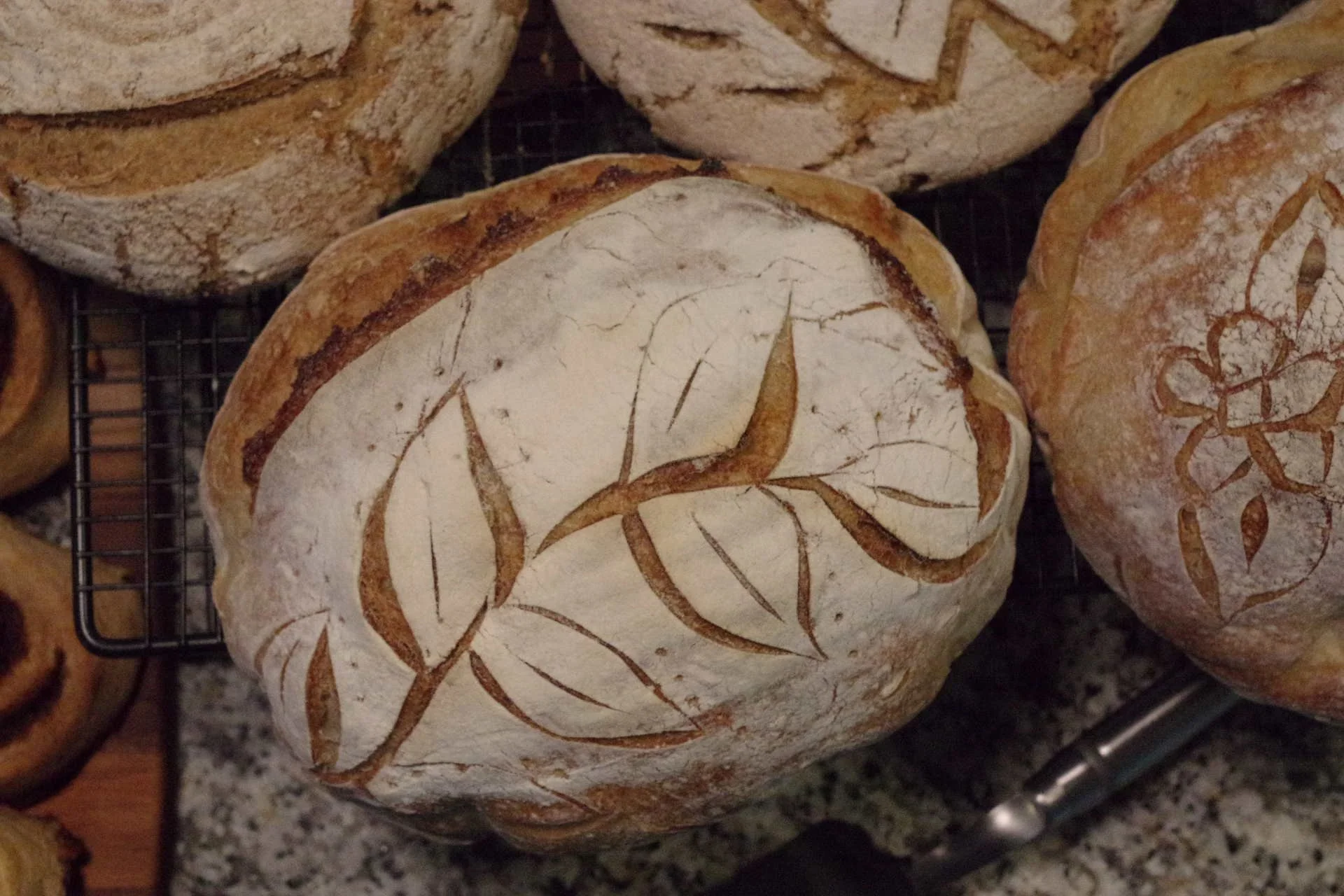Feeding your
Sourdough
Starter
Yay! We’re so happy you’re here. Feeding your starter may seem intimidating at first, but we assure you – it’s much more simple than it seems. :)
The first step is determining what you want to make with your sourdough starter. Some recipes call for discard and some call for active starter.
Active Starter: A starter that has been fed 4-8 hours before and is at it’s peak (meaning, it has doubled in size since the height it was when you fed it). Different starters take different lengths of time to achieve “peak”. You will get to know your starter and about how long it takes to peak.
Discard: A starter that is not at its peak and is hungry. This is the state of your starter 95% of the time, and when you purchase a starter kit you are getting discard. Discard is great in many recipes, but for bread you want to make sure you have an active starter.
The starter in the photo is active. The elastic band was the height of it after feeding (4 hours ago). This active starter would be perfect for starting a bread recipe.
-
Different people have different ratios and recommendations. For beginners, we recommend using the 1:1:1 ratio, by weight, when feeding. This is best achieved using a scale. A digital scale can be purchased on Amazon for pretty cheap.
For Example: If your recipe called for 100g of active starter, you would take 50g discard + mix it with 50g of filtered water + 50g flour. The consistency should be similar to a thick pancake batter. Mark the height of it when you’re finished feeding it and wait for it to double in size before using it in your recipe.
This may seem complicated so I’ll break it down in a way that helped me understand and feel less intimidated: your starter is resilient, mature, and can survive a lot. Your starter can handle too much food (ie. too much flour and water) but it can’t handle not enough food (less flour and water than the amount of starter). This is where discarding comes into play.
ie. If you had 200g of discard and only fed it 50g water + 50g flour, you would not be feeding it enough for it to to become active and it would not peak. On the flip side: if you had 200g of discard and fed it 400g water + 400g flour, your starter would be just fine. The large amount of flour and water would cause the peak time to take a little longer than usual, however it would reach peak eventually.
-
Many people will tell you to toss it, but since your starter is mature and active you can use your discard in recipes. My personal favorite is using it in a sourdough dutch baby.
-
This depends. If you’re storing it on the counter, you should aim to be feeding it every 24-48 hours. If you’re storing it in the fridge, your starter can easily go 1-2 weeks without a feeding.
Your starter is incredibly hard to kill and can be nursed back to life under almost any circumstance. If you think you’ve killed your starter, do a quick google search before tossing it out.




